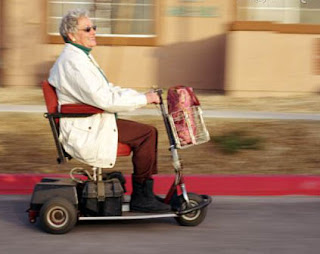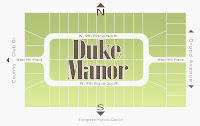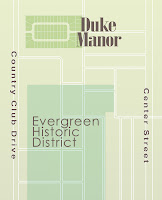Over the next ten years, Housing preferences are predicted to shift dramatically.[1] West Mesa can take advantage of this shift- away from suburban lifestyle towards centrally located living- by providing specific living experiences for Generation "Y" ( Millenials), and their parents, Baby Boomer Retirees.
 Millenials
MillenialsWhy?
West Mesa possesses an advantageous proximity.
It's convenient enough that it is often blurred with "Tempe". Many understandably don't recognize the existing boundaries between Mesa/Tempe/Chandler. Residents of the Villagio on Rio Salado Dr live in a trendy upscale development that also happens to be extremely convenient ( adjacent to Loop 101 and .5 miles from Tempe Marketplace). Do they understand that they live literally across the street from the city of Mesa?
The Mesa/Tempe border will continue to be a fascinating indicator as development continues East along the Light Rail Line into Mesa. Already, there is a Housing complex, Apache Trails ASL, under construction directly on the Tempe/Mesa border, at 2430 E Apache Blvd. The sight was selected because of "easy drive access to highways /easy walk access to Light Rail line". Another 100 feet east, and the development has arrived in Mesa.

Twelve city blocks West, development for Generation Y is thriving, and it's essentially the same neighborhood. The success of the Grigio Metro ( at right) isn't dependent upon immediate proximity to shops and restaurants -an Auto Parts store and a Check cashing outlet are the closest retail. Rather, it is built upon proximity to Light Rail.
Most Millenials don't have school aged children
This is important, as school systems continue to be a major reason that young families choose the isolation of suburbia.
Many Millenials are educated
While a college education doesn't make one a better person, it can definitely help with one's quality of life . Better income means better stability, means better neighborhoods. Millenials also possess a desire to live in "Urban" areas, and see value within becoming "Urban Pioneers"- that is, becoming part of a community and making things better. Our wisest move is to befriend and empower them as a whole, and allow them to share the revitalization burden with us.
Baby Boomer retirees.
Why?
Again, proximity is key. West Mesa is close to the airport and major freeways, yet much of it is exempt from the hustle & bustle of rush hour and retail shopping. We're still a bedroom community, with many interior neighborhoods that remain astonishingly quiet and gentile.
Why Baby Boomers?
The unfortunate facts are that seniors have collectively lost almost half of their retirement wealth.[2] Meanwhile there is an abundance of essential budget shopping here in Mesa. Post housing collapse, the plain facts are that retirees will increasingly be shopping at WalMart, and not Nordstroms. Discount stores, basic grocers, and thrift stores in close proximity will prove to be valuable resources for them.
 Seniors make good neighbors
Seniors make good neighborsOne of the factors that significantly decreases quality of life in an urban environment is noise. Seniors predictably and endearingly possess a gentler and more quiet approach to daily life.
Seniors are gentle on infrastructure
Mesa has serious budget problems that affect everything- including streets and infrastructure. We, as a community, need a break.
Seniors are exempt from the rigors of daily commuting. They often take public transportation, walk, or use motorized wheelchairs instead of driving. That means less pollution- both noise pollution and air pollution- and less wear and tear on our roads. Over time, this has a huge effect on a neighborhood.
Seniors are stable
One of the most harmful things to the business model of any rental community is "turnover". Instability kills profitability and makes it less likely that owners of rental communities have the funds to re-invest or maintain those properties.
Seniors of all income levels are more likely to be supported by Social security, social programs, individual retirement plans, and families. Some of the most stable communities in Mesa's older neighborhoods are for Senior living.
What about everyone Else?
It's accepted that there will continue to be a considerable portion of the population that will desire to live in the suburbs-isolated from public transportation and housing density /diversity, but there will be an increasingly large sector of the population that will want and need to live in a more urban scenario.
Making a place for them is an investment in our future. Planning, Design, and Marketing are key.
[1] http://www.washingtonmonthly.com/features/2010/1011.doherty-leinberger.html
[2] http://www.usatoday.com/money/economy/housing/2009-06-04-foreclose-mortgage-seniors_N.htm#chart
Grigio Metro:
http://www.grigiometro.com
Apache Trails ASL:
http://www.apacheasltrails.com/main.html



